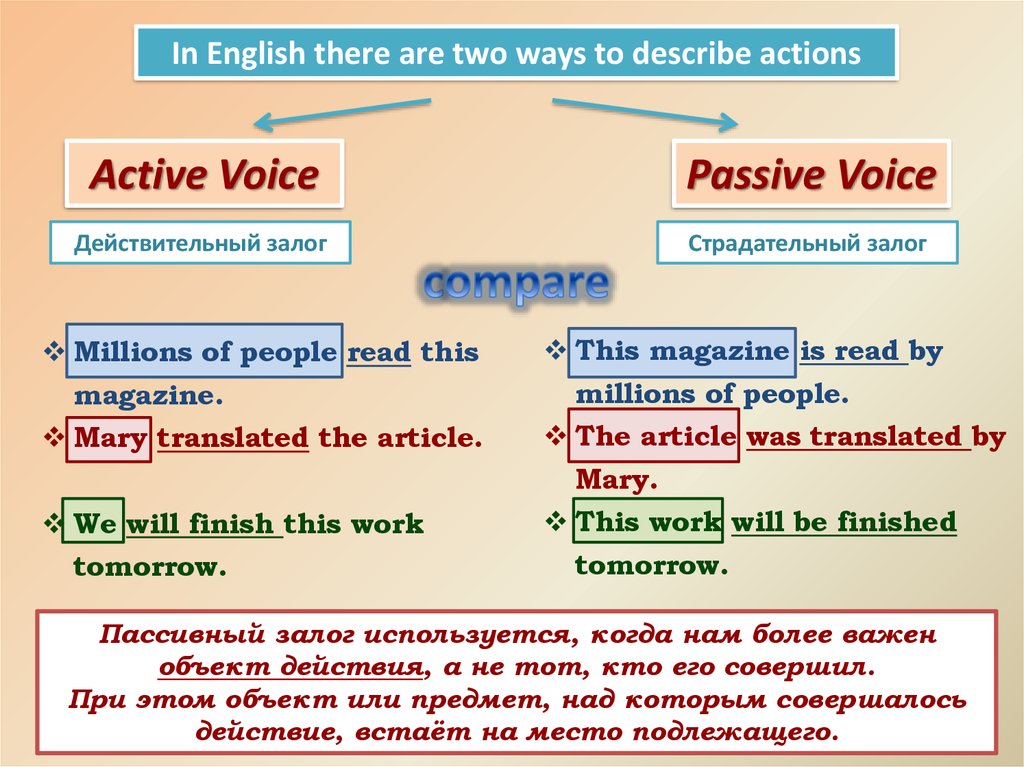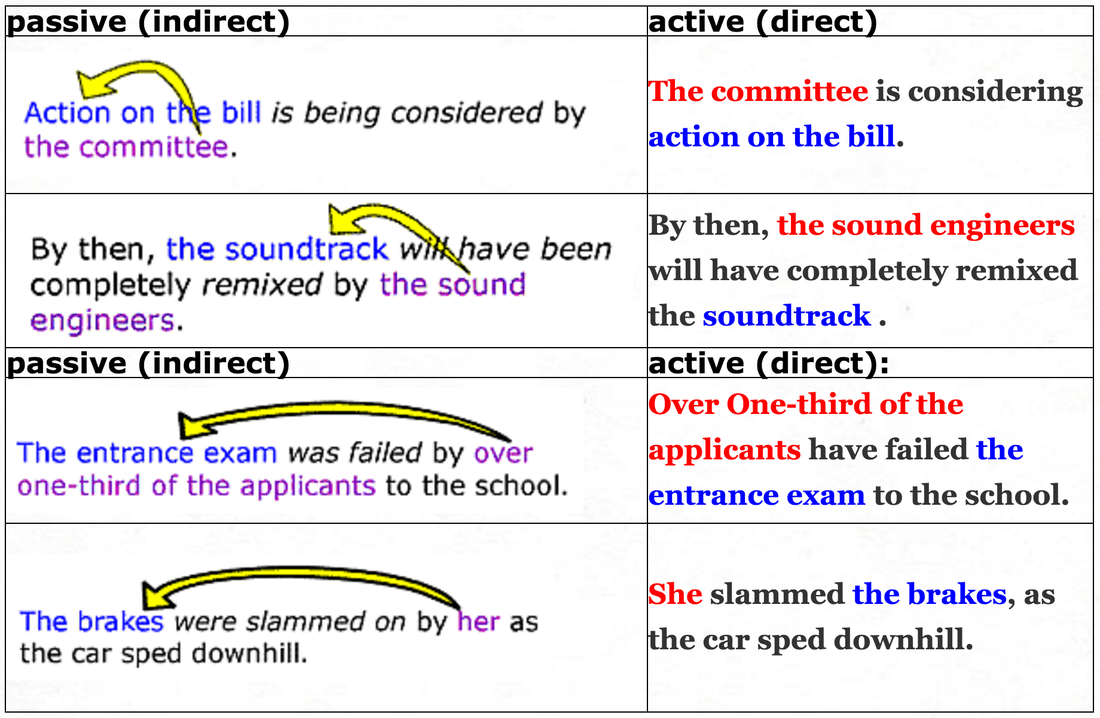
However, the passive voice is more acceptable in published works, especially fiction, than it is in academic and student writing. Writers want their writing to clearly show what they intend, and often that will mean active voice. Readability is the key consideration, especially when writing fiction, as is the conveyance of meaning. In published works, including works of fiction, the rules are a bit more flexible. Only use passive voice if the active voice construction is impossible to convey the meaning when writing papers for a school setting. Professors and teachers tend to prefer this type of writing. Students should always focus on writing in the active voice. However, some instances where passive voice is the only way to make a point are possible in academic writing.Īctive voice is the writing voice of choice in all instances except when it does not work to convey the intended meaning. In the academic world, publishers almost always prefer active voice. They also need to write clearly without vague meanings, for this reason, active voice works well. To keep their reader’s attention, bloggers must be succinct because online readers have short attention spans.

Readability and engagement are the two key elements of a blog post.īloggers often throw conventional grammar rules out the window, but they should still try to write clearly and concisely. Bloggingīloggers tend to write in a more casual tone and voice. Here are four types of writing where readers nearly always prefer the active voice. Only use passive if you have no other choice. Passive voice makes the sentence vague, and that can confuse the reader.Īs a general rule of thumb, you need to use active voice any time it works, so most of your sentences are active. It makes tighter, clearer writing and eliminates problems with wordiness. When Should You Use Active Voice?Īctive voice is best in any sentence where it makes sense. This makes the sentence constructions active. In every sentence, the subject is the doer of the action. Every Saturday, I will clean the house.Įven though some have helping verbs or include future and past tense verbs within the sentence structure, all of these are examples of active voice.The construction crew rebuilt the broken bridge.Here are some additional examples of active voice: Seeing active voice in action makes it easier to spot. If it comes after the verb and is not the subject of the sentence, and you also see past participle, then the sentence is passive voice. The person or thing doing the action should be the subject of the sentence and come before the verb. So how can you identify passive voice so you can fix it? Simply look for the action and who did it. When determining active voice, always look at the subject and the verb. Even though it has be loved at the end, the active subject and verb pair means the sentence has active voice. This is where the distinction can get confusing. In order to be the passive voice, the helping verb must work with a past participle. Grammar teachers and writers also call these “helping verbs.”Īre all instances of helping verbs passive voice? No.

So, in the first example above:Īre is the form of to be and loved is the past participle of love.įorms of to be include: was, is, am, are, have been, has, will be, being, and will have been. Passive verbs use a form of to be paired with the past participle of the verb. In order to get voice construction right and write strong sentences, you must be able to identify a passive verb.
ACTIVE VOICE HOW TO
How to Identify an Action Verb Versus a Passive Verb The last sentence doesn’t even make sense when written in a passive sentence structure. The first two sentences still make some sense, but they are wordy.

In other words, the subject has some action done to it. The passive voice, on the other hand, happens when the verb acts on the subject. By using an active voice sentence, you can convey your meaning with fewer words. The subject of the sentence in each example does the action.

The store does the action of opening its doors. The dog does the action of loving. The mom does the action of picking up and rocking the baby. The second sentence has a compound verb, but still the same basic structure. Even if you add a prepositional phrase, the subject’s basic structure and verb remain the same. These sentences use the form: subject, verb, object.


 0 kommentar(er)
0 kommentar(er)
